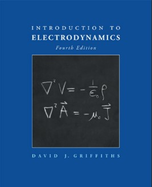Solution Found!
According to Snell’s law, when light passes from an
Chapter 9, Problem 39P(choose chapter or problem)
Problem 39P
According to Snell’s law, when light passes from an optically dense medium into a less dense one (n1 > n2) the propagation vector k bends away from the normal (Fig. 9.28). In particular, if the light is incident at the critical angle
then θT = 90?, and the transmitted ray just grazes the surface. If θI exceeds θc, there is no refracted ray at all, only a reflected one (this is the phenomenon of total internal reflection, on which light pipes and fiber optics are based). But the fields are not zero in medium 2; what we get is a so-called evanescent wave, which is rapidly attenuated and transports no energy into medium 2.26
A quick way to construct the evanescent wave is simply to quote the results of Sect. 9.3.3, with kT = ωn2/c and
the only change is that
is now greater than 1, and
is imaginary. (Obviously, θT can no longer be interpreted as an angle!)
(a) Show that
This is a wave propagating in the x direction (parallel to the interface!), and attenuated in the z direction.
(b) Noting that α (Eq. 9.108) is now imaginary, use Eq. 9.109 to calculate the reflection coefficient for polarization parallel to the plane of incidence. [Notice that you get 100% reflection, which is better than at a conducting surface (see, for example, Prob. 9.22).]
(c) Do the same for polarization perpendicular to the plane of incidence (use the results of Prob. 9.17).
(d) In the case of polarization perpendicular to the plane of incidence, show that the (real) evanescent fields are
(e) Check that the fields in (d) satisfy all of Maxwell’s equations (Eq. 9.67).
(f) For the fields in (d), construct the Poynting vector, and show that, on average, no energy is transmitted in the z direction.
Prob 9.22
Calculate the reflection coefficient for light at an air-to-silver interfaceat optical frequencies (ω = 4 × 1015/s).
Prob 9.17
Analyze the case of polarization perpendicular to the plane of incidence (i.e. electric fields in the y direction, in Fig. 9.15). Impose the boundary conditions (Eq. 9.101), and obtain the Fresnel equations for Sketch as functions of θI, for the case β = n2/n1 = 1.5. (Note that for this β the reflected wave is always 180? out of phase.) Show that there is no Brewster’s angle for any n1 and n2: is never zero (unless, of course, n1 = n2 and μ1 = μ2, in which case the two media are optically indistinguishable). Confirm that your Fresnel equations reduce to the proper forms at normal incidence. Compute the reflection and transmission coefficients, and check that they add up to 1.
Equation 9.67
Questions & Answers
QUESTION:
Problem 39P
According to Snell’s law, when light passes from an optically dense medium into a less dense one (n1 > n2) the propagation vector k bends away from the normal (Fig. 9.28). In particular, if the light is incident at the critical angle
then θT = 90?, and the transmitted ray just grazes the surface. If θI exceeds θc, there is no refracted ray at all, only a reflected one (this is the phenomenon of total internal reflection, on which light pipes and fiber optics are based). But the fields are not zero in medium 2; what we get is a so-called evanescent wave, which is rapidly attenuated and transports no energy into medium 2.26
A quick way to construct the evanescent wave is simply to quote the results of Sect. 9.3.3, with kT = ωn2/c and
the only change is that
is now greater than 1, and
is imaginary. (Obviously, θT can no longer be interpreted as an angle!)
(a) Show that
This is a wave propagating in the x direction (parallel to the interface!), and attenuated in the z direction.
(b) Noting that α (Eq. 9.108) is now imaginary, use Eq. 9.109 to calculate the reflection coefficient for polarization parallel to the plane of incidence. [Notice that you get 100% reflection, which is better than at a conducting surface (see, for example, Prob. 9.22).]
(c) Do the same for polarization perpendicular to the plane of incidence (use the results of Prob. 9.17).
(d) In the case of polarization perpendicular to the plane of incidence, show that the (real) evanescent fields are
(e) Check that the fields in (d) satisfy all of Maxwell’s equations (Eq. 9.67).
(f) For the fields in (d), construct the Poynting vector, and show that, on average, no energy is transmitted in the z direction.
Prob 9.22
Calculate the reflection coefficient for light at an air-to-silver interfaceat optical frequencies (ω = 4 × 1015/s).
Prob 9.17
Analyze the case of polarization perpendicular to the plane of incidence (i.e. electric fields in the y direction, in Fig. 9.15). Impose the boundary conditions (Eq. 9.101), and obtain the Fresnel equations for Sketch as functions of θI, for the case β = n2/n1 = 1.5. (Note that for this β the reflected wave is always 180? out of phase.) Show that there is no Brewster’s angle for any n1 and n2: is never zero (unless, of course, n1 = n2 and μ1 = μ2, in which case the two media are optically indistinguishable). Confirm that your Fresnel equations reduce to the proper forms at normal incidence. Compute the reflection and transmission coefficients, and check that they add up to 1.
Equation 9.67
ANSWER:
Step 1 of 7
1)We have to show
2)We have to calculate reflection coefficient.
3)Fields when the polarization parallel and perpendicular to the plane of incidence.
4) Finally we have to construct the poynting vector.
